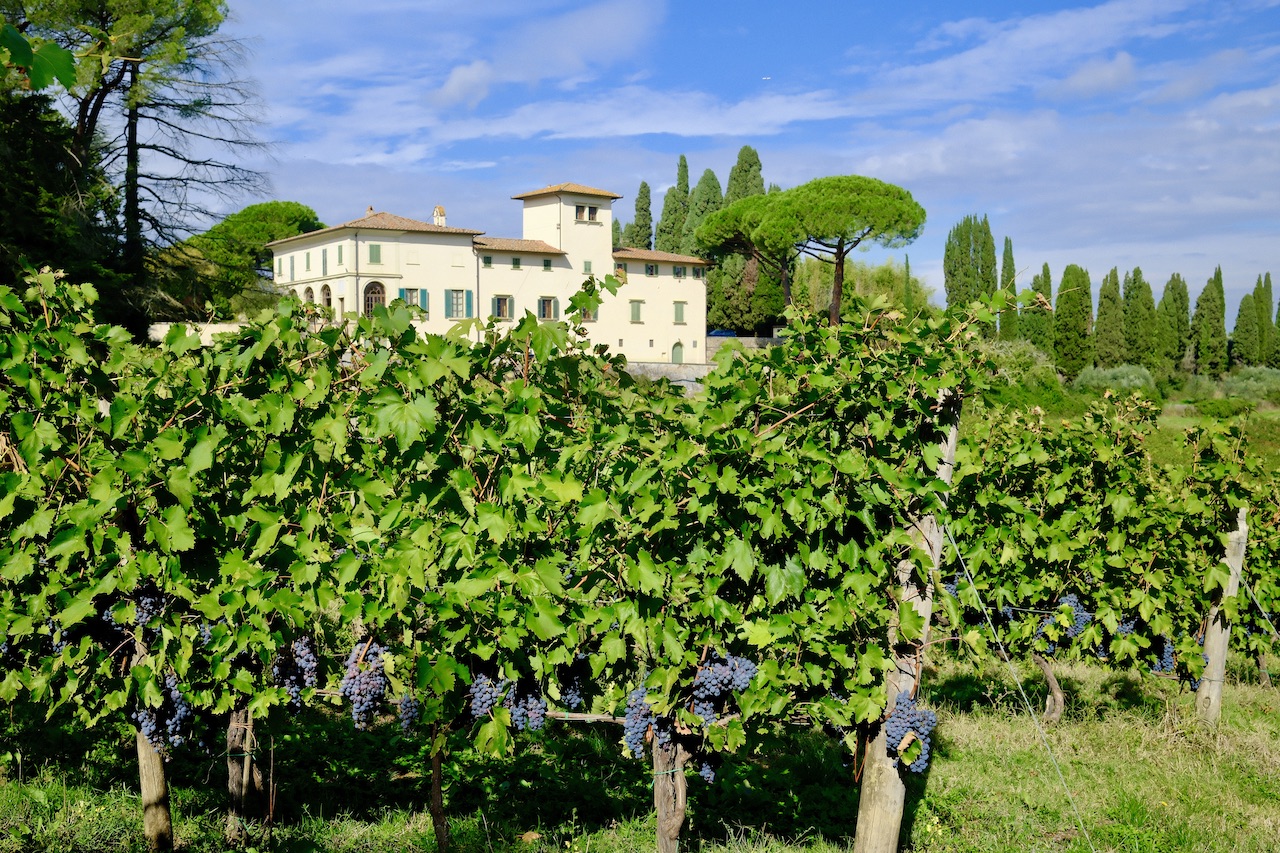Wine tours in Tuscany - About Angie - +39 3333185705 - angie.chianti@gmail.com
Most visitors to Tuscany know about our famous Chianti wine. But did you know that we also produce some lovely, crisp white wines?
If you join us on a Tuscan wine tour like this one, you’ll learn first-hand all the secrets about how white wine is made. You’ll easily see what accounts for some of the differences between red and white wine.
For now, here are the highlights.
How white wine is made
Naturally, it all starts with the grapes. It’s true that you can make white wine from red grapes. All grapes produce clear juice. The color of red wine comes from keeping the grape skins in the wine as it ferments. That said, most of the white wines in Tuscany are made with green grapes, such as Vernaccia, Vermentino, Trebbiano and Malvasia. Typically, the skins aren’t used during the fermentation of white wine.
When making white wine, freshness is very important to the quality of the wine. Often, the grapes are picked early in the morning when it’s cool. After destemming, they go straight into a wine press.
The freshly pressed juice sits in a chilled tank for awhile to let any debris settle. Then it’s ready for fermentation when added yeast turns the sugars into alcohol. It takes about 14 days to ferment a white wine, which is normally done at cooler temperatures than red wines to preserve the delicate flavors. Typically, we use stainless steel tanks to ferment white wine.
Some winemakers may opt for a second fermentation that changes the acids in the wine. For example, this is often used to make Chardonnay to produce a creamy and buttery tasting wine.
Finally, the wine is clarified to remove any sediment or cloudiness and then passed through a filter to get rid of any bacteria that might spoil the wine in the bottle.
This is the Tuscan white wine you should try
We hope you’ll try a selection of our refreshing white wines when you visit Italy. But there is one you can’t miss: Vernaccia di San Gimignano. It’s the first white wine in Tuscany to obtain DOCG status.
Vernaccia is made with grapes from the oldest vines. In this case, the grapes aren’t pressed until after a cold maceration period – when the skins stay in contact with the wine. This adds more structure to the wine. Vernaccia is known for its floral bouquet, a dry, crisp flavour, and a slightly bitter aftertaste.
This Vernaccia from the Calcinaia winery is lovely with citrus and floral flavors, a hint of mimosa and a bitter almond aftertaste.
But really, you should join us on our wine tour to the medieval town of San Gimignano for the full Vernaccia experience (plus some Tuscan reds!)





